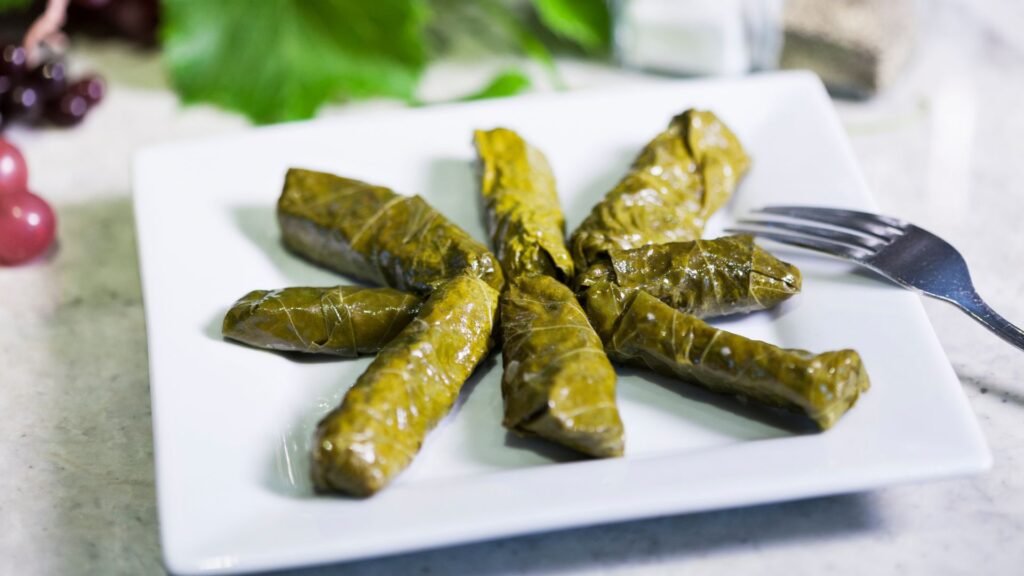DiVino may earn commissions from qualifying purchases.
What is Retsina Wine?
Retsina may not be be on your wine radar yet, but keep your eye out for it on wine lists. Greece’s signature pine resin-scented wine is making a small, but spicy comeback.
For years, if you’d even heard of Retsina wine, the first thing to come to mind was a dusty bottom-shelf bottle or something your Greek grandparents pulled out of the pantry. These days you can find clean, bright, vibrant versions of Retsina that work fantastically with food, or even as delightful summer sipping wines.
Much like Chianti, which was long-scorned for its kitschy flask packaging, Retsina has also had to fight its way back to the market.
Similarly Rosé wines have been produced for centuries in a clean dry, style, but it took a massive marketing campaign to overturn the idea of rosé as a cloying sweet wine, thanks to White Zinfandel. Lambrusco has endured a similar struggle on its way back to wine lists and store shelves at eye level.
Retsina wine is making a comeback
Retsina wine producers in Greece have taken on the task of producing a more palatable version of the resinated wine through modern techniques and quite simply, attention to detail during the winemaking process. Modern Retsina is made by blending chips of pine resin with macerated grapes during fermentation. How much resin, and the amount of time it macerates can both radically change the flavor profile of the wine.
Kechris Winery has been leading the charge, experimenting not only with traditional Retsina made from white grapes, but also rosé, and an unfiltered, semi-sparking retsina made in the ancestral method.
History of Retsina Wine

Retsina is a derivative of the Greek work, Rρητίνη (ritíni), meaning resin.
Back in the earliest days of wine making, large amphora vases and jugs were used to store and transport wine.
Flavoring wine with salt, honey, wild herbs, and tree resins was a common practice, as the wine itself was not always so palatable.
The resinated aromas of what is known as Retsina wine may also have been a byproduct of the Aleppo pine resin used to seal the amphora containers.
Retsina Wine Grapes
Retsina can be produced with any number of Greece’s white grape varieties. Assyrtiko-based Retsinas age longer and develop more complex qualities, but if you’re in a rush to crack open that bottle, opt for a more traditional retsina made from Roditis, Savatiano or a blend of both.
Savatiano is Greece’s most widely-planted, and possibly most ancient white variety. It can develop a rich palate and luscious fruity and and floral notes of peach, apricot, melon and citrus.
Roditis is actually in the grey-skinned category (think Pinot Gris and Pinot Grigio). It tends to produce lighter, elegant, dry and crisp wines, but with care, pruning, and a lot of sunshine, it can also develop a deeper citrus and floral character.

What Does Retsina Wine Taste Like?
The aroma and flavor profile of Retsina vary considerably. The base wine, usually Savatiano, Roditis, or Assyrtiko, range from very dry and clean, to opulent and tropical, with notes of peaches, apricots, citrus (lemon and lime), pear, and green apple. White flower notes are common, along with a whiff of sea water. The predominant aroma and lingering flavor is pine resin.
Retsina may smell sweet and green, but it is decidedly a dry wine, often with a slightly piquant and mineral finish.

Five Retsina Wines to Try in 2023
Kechris: Retsina Kechribari
Made from 100% Roditis, one of the most common Retsina white varieties. Kechris is located in northerly, mountainous Macedonia. In addition to notes of pine and mastic resin, the wine has a full spectrum of aromas including green apple, pear, melon, lemon, and lime.
Malamatina
Old-school packaging with a fresh, new flavor. Malamatina is made from the classic combo of Savatiano and Roditis.The wine is light-bodied and dry, and while pine resin certainly leads the aroma profile, look for pale floral notes and a medium, mineral finish.
Don’t be fooled by the label, Malamatina is one of Greece’s most established wineries, and implements modern technology to preserve and respect the environment, and to produce clean, characterful, and quintessentially Greek wines.
Markou: Retsina
100% Savatiano grapes lend a particularly juicy, tropical quality to this Retsina, along with pine and mastic resin, and a generally vegetal-herbaceous quality that makes it a natural pairing for dill and spinach-laced spanakorizo, a hearty and healthy staple of Greek cuisine.
PAPAGIANNAKOS: Retsina
Made from 100% Savatiano grapes, harvested from 50-year-old vines that thrive on limestone soils. That means a mouthful of mineralily, in addition to a light pine note and hints of bright lemon.
Gaia: Ritinitis Retsina
100% Roditis grapes from a select harvest on the lush slopes of Nemea, in the northeastern Peloponnese peninsula. A decidedly pine-centric Retsina, this wine also carries some weight on the palate. The result is a balance of silky and spiky green with a very long finish. Buy it online.

Retsina Wine and Food Pairing
The dominant pine resin scent could be challenging when it comes to food and wine pairing, but the clean, green qualities of Retsina are a cleansing contrast to oil and garlic-heavy dishes, but also uplift and enhance simpler dishes, like Tiropita – feta stuffed savory pastries, and the herbed rice used to stuff vine leaves for Dolmades. In fact, any dish with a base of bright green herbs like dill, oregano, or bay leaf will get a lift alongside a splash of Retsina.
Try a recipe for Spanakorizo, a classic rice and spinach dish.
The bright, balsamic quality of Retsina also makes a great match with lamb: think of the age-old mint mint jelly combo.



